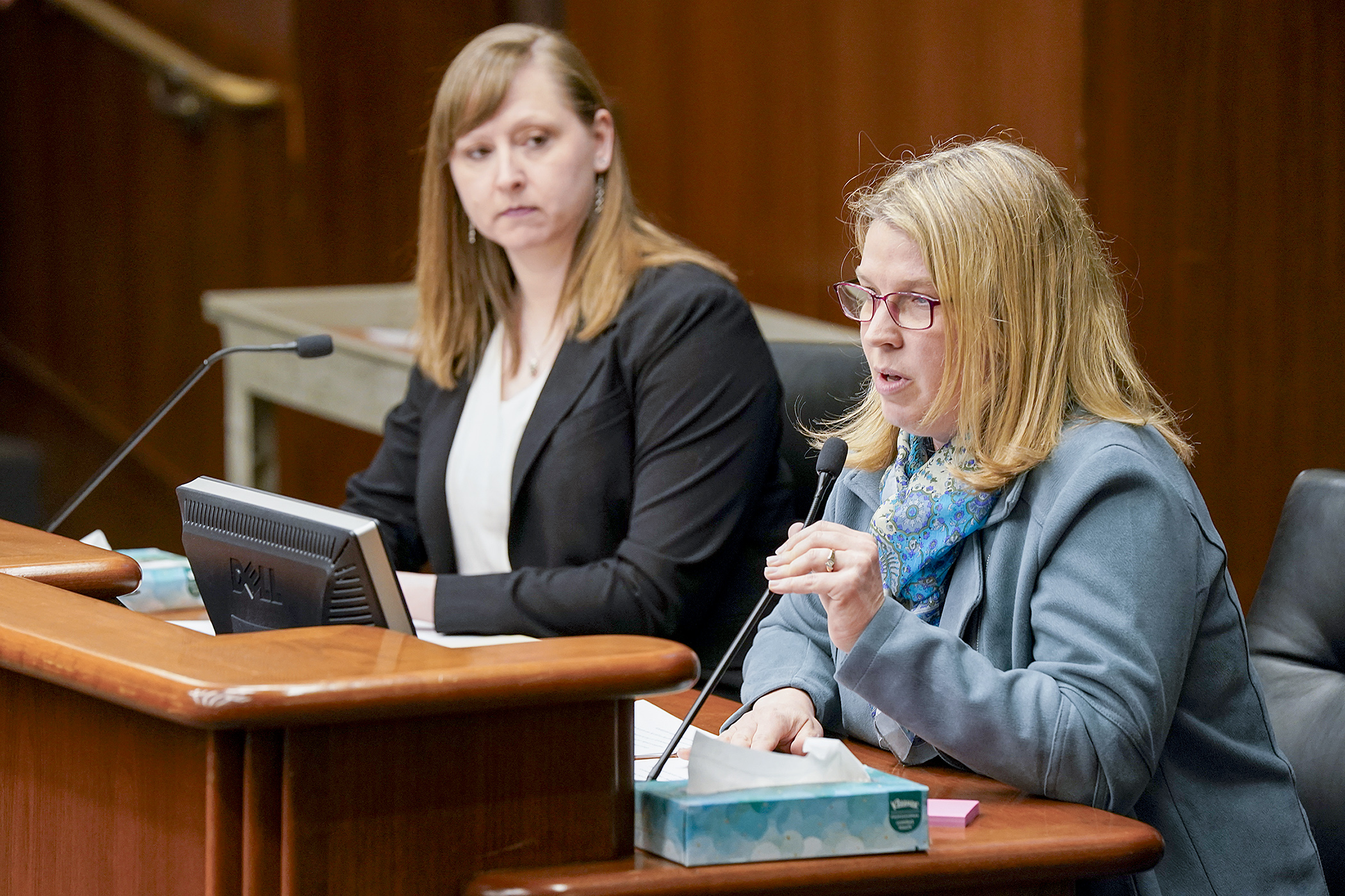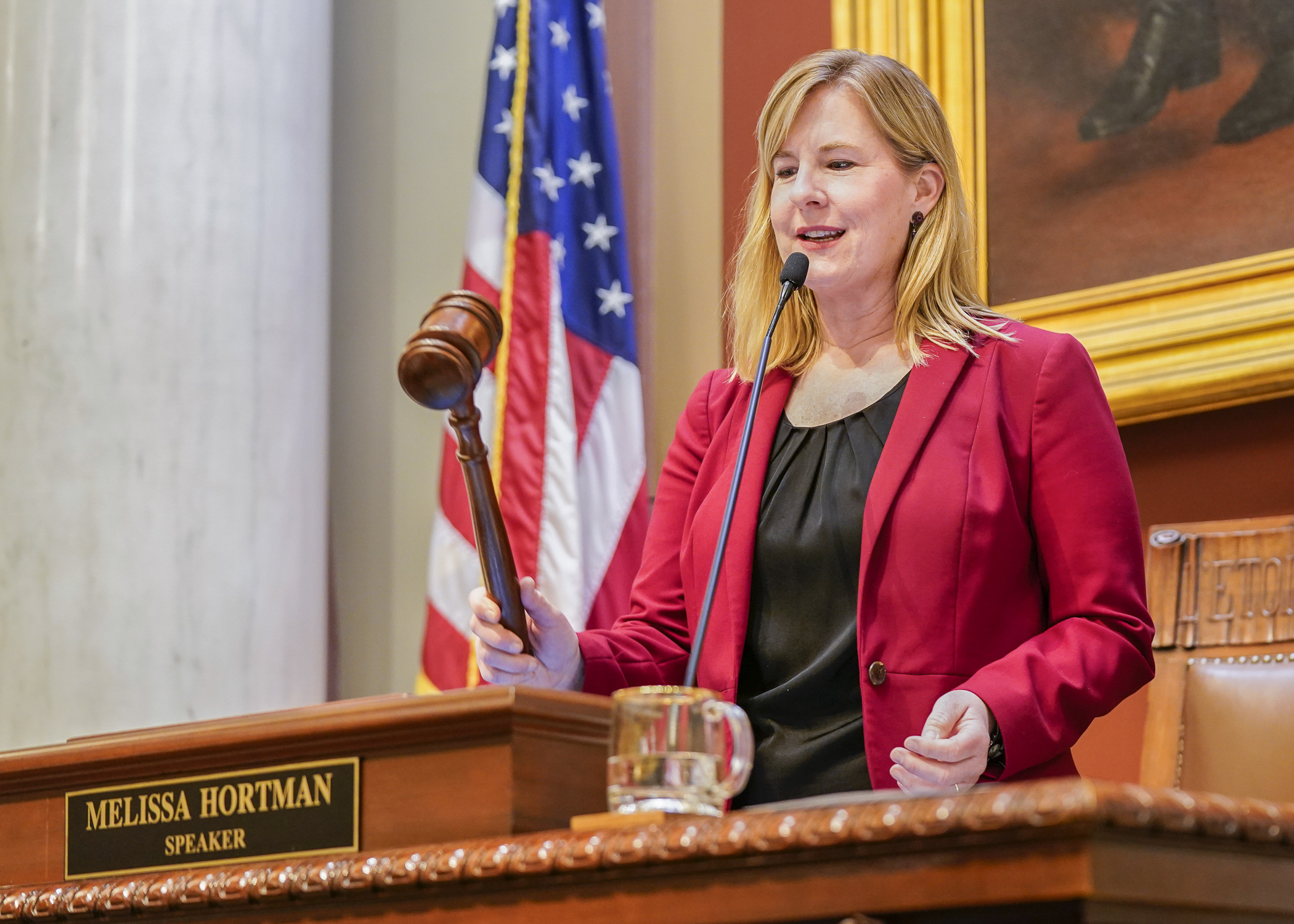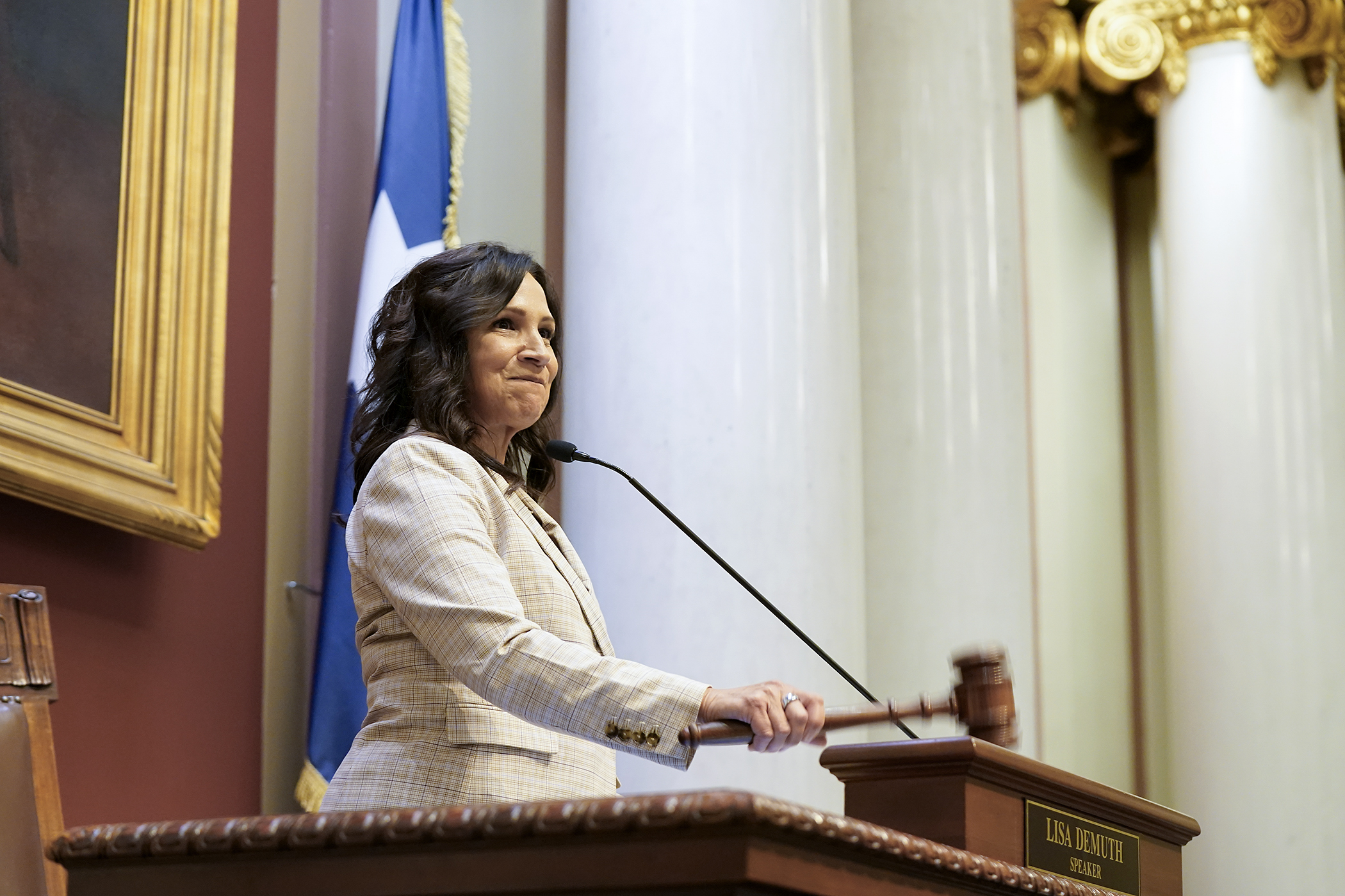Overdrawn food banks in line for cash infusion

Hungry Minnesotans often find help at food shelves which, in turn, get much of the sustenance they supply from food banks.
But with the high cost of food fueling a record number of visits to food shelves, supply can’t keep pace with demand at the state’s food banks.
Sponsored by Rep. Amanda Hemmingsen-Jaeger (DFL-Woodbury), HF4150 attempts to close that gap by establishing a program funded with a $5 million annual appropriation beginning in fiscal year 2025 to help food banks purchase and distribute food.
The House Children and Families Finance and Policy Committee laid the bill over, as amended, Thursday.
“This basically establishes an ongoing funding mechanism, which I think is a demonstration of how we as Minnesotans take this seriously and have a serious approach to solving this problem,” Hemmingsen-Jaeger said.
The bill would create a program in the Department of Human Services to distribute funds to the regional food banks it contracts with through The Emergency Food Assistance Program, a federal initiative to help low-income Americans supplement their diet with nutritious foods. It was amended to also include a one-time appropriation of $2 million for additional assistance to food shelves.
Responsibility for the program would be transferred to the newly created Department of Children, Youth and Families when it is operational.
“Demand for emergency food is higher than ever, meaning we are having to purchase and transport more food than ever before,” said Sarah Moberg, chief operations officer for Second Harvest Heartland. “We are trying to keep up, but supply simply isn’t matching demand and we can’t close the gap without your help.”
Second Harvest Heartland works with 1,500 program partners across 41 counties in Minnesota and 18 counties in western Wisconsin, providing 78% of the food distributed by hunger relief programs across the state.
Moberg said food banks source food from local growers, farmers, manufacturers, grocery stores and restaurants, and are able to efficiently distribute those donated products. But they also make bulk purchases of highly in-demand items that are rarely donated, and she said the bill would provide infusion of much-needed items such as produce, eggs, dairy and proteins.
“By itself it will not close the expected meal gap entirely, but every dollar will go to ensuring fewer Minnesotans go hungry, and I hope that’s a goal we can all get behind,” Moberg said.
Related Articles
Search Session Daily
Advanced Search OptionsPriority Dailies
Speaker Emerita Melissa Hortman, husband killed in attack
By HPIS Staff House Speaker Emerita Melissa Hortman (DFL-Brooklyn Park) and her husband, Mark, were fatally shot in their home early Saturday morning.
Gov. Tim Walz announced the news dur...
House Speaker Emerita Melissa Hortman (DFL-Brooklyn Park) and her husband, Mark, were fatally shot in their home early Saturday morning.
Gov. Tim Walz announced the news dur...
Lawmakers deliver budget bills to governor's desk in one-day special session
By Mike Cook About that talk of needing all 21 hours left in a legislative day to complete a special session?
House members were more than up to the challenge Monday. Beginning at 10 a.m...
About that talk of needing all 21 hours left in a legislative day to complete a special session?
House members were more than up to the challenge Monday. Beginning at 10 a.m...